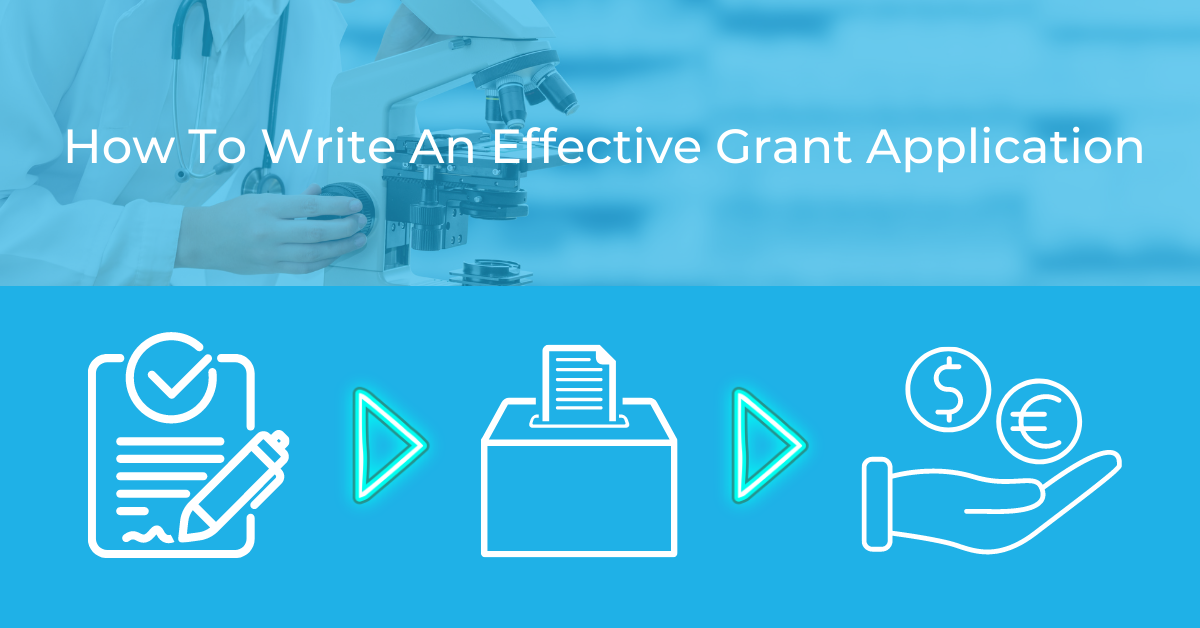




Quick Takeaways:

The English language has a rich history of borrowing words from other languages, especially from Latin. Latin abbreviations such as ‘a.m.’, ‘p.m.’ and ‘CV’ have become part of our everyday vocabulary. Such abbreviations are also frequently used in academic writing, from the ‘Ph.D.’ in the affiliation section to the ‘i.e.’, ‘e.g.’, ‘et al.’, and ‘QED’ in the rest of the paper.
This guide explains when and how to correctly use ‘et al.’ in a research paper.
If you’re a researcher, not only do you have to master skills for performing, presenting, and reporting research, but you must also know how to compete for research grants to fund your future projects. Learning how to apply for and win research funding is especially important if you’re an early-career researcher setting out to establish yourself in your chosen field. This guide outlines the key concepts and steps you need to consider when writing grant applications.
An important strategy to note is that writing research grant applications relies on persuasive writing and is very different from writing research articles. It requires logical argumentation, an understanding of the readers’ values and beliefs, careful forecasting, and self-marketing, all while matching the funder’s requirements. This guide explains eight pairs of ‘Ps of Persuasion’ to consider when applying for grant funding:
The general advice below is relevant to any academic research funding application. To illustrate a real funding exercise, examples will refer to the Hong Kong government’s competitive research grants for local universities, in the form of the annual Research Grants Council General Research Fund (GRF) awards. Early-career researchers in Hong Kong can choose to compete with only other early-career researchers in the parallel award exercise called the Early-Career Scheme (ECS).
As with any endeavour, in research grant writing, failing to plan is planning to fail. Allow yourself plenty of time to search for relevant and appropriate funding sources and identify all criteria of the grant. Things to look for and strictly adhere to are as follows:
Your application will rely on a research project proposal that is written mostly in the future tense. Your proposed project should be unique and based on a thorough literature search and needs analysis. The goal of your project has to match the funder’s criteria, and should be SMARTER and FINER:
Ensure your project proposal is complete and clearly defines the following:
Throughout the grant application, you need to convince the funder that your nominated research team is qualified, willing, and available to conduct the proposed research. Your team, and institution, has to be able to enthusiastically offer its experience and commitment to advance the field and help society in a meaningful way.
Your application also has to demonstrate that your team is professional and responsible and will use the funding ethically to deliver value. At the same time, you need to promise you will minimise financial risk by including alternative actions if things don’t go according to plan. The funders will expect you to forecast results, as well as possible problems and solutions, with appropriate contingency plans.
In addition, you should declare if you’ll receive other funding to support parts of the project, because double-funding of the same proposal is never allowed.
Try to closely align your mission and motivations with those of the funder. So, be clear at the start as to what the main research topic, context, and purpose are. What are key issues, reasons, and factors behind your research topic and why should the funders care? Identify a practical problem area or unresolved or new and interesting research question in your field. Also explain why it’s important to solve such problems or answer such questions.
You need to ‘show your working’ to get the reviewers to understand, relate to, and agree with your viewpoints, predictions, and proposed actions.
Clearly state necessary definitions, frameworks, and variables, and explain any assumptions. Highlight the theoretical, practical, cultural, humanitarian, or other principles underlying your project. For example, identify limitations or ‘pain points’ in processes that you plan to help with, or link your proposed study to emerging trends, global issues, or sustainable development goals.
When justifying your research area and study purpose, as well as any other parts of your proposal, always give suitable reasons and cite relevant evidence from past research. Convince the funder by logically presenting both sides of each argument and critically evaluating the issues before settling on your chosen ‘answer’. Remember to remain courteous and criticise past research, not the researchers, who might be among the review panel judging your application!
Narrow down the research area to pinpoint a specific problem or research question that will be feasible to study within a certain time and budget. Convince the reviewers that you’ll be able to do the proposed study and have hindsight, insight, and foresight into why the problem/question has been ignored or not (completely) addressed but should be.
Answer the following questions:
Include evidence of your and your colleagues’ past performance by referring to relevant published studies and findings. Build a coherent picture, showing how your team members complement each other, how past studies logically lead to the current one, and why the study is worth funding.
You can organise and ‘pitch’ your story in the following logical way, especially when drafting your outline and notes:
However, note that the grant application form may split up this information, and you’ll need to repeat parts of the storyline in separate sections and in different contexts.
The complete storyline should appear in summary form in the abstract. For example, the Hong Kong GRF/ECS requires an Abstract of 400 words. It should not normally contain any references, illustrations, or budget amounts, and should be written in non-technical language for the initial panel review.
You’ll need to convince the reviewers that the proposed methods make academic and practical sense and are suitable, sound, and ethical. A logical way to present the practical aspects of the study is to progress from a problem to a research question (and hypothesis, for hypothesis-testing studies). Then, go from general to specific to define and justify the following:
Many funding applications ask for a brief list of the aims and specific objectives. The Hong Kong GRF/ECS requires a statement of Project Objectives (800 words) that include the aim and rationale, general approach, and a bulleted list of objectives, together with an outline of each objective’s methods, expected deliverables/outcomes, and any alternative actions depending on the outcome. The statement should end with expected academic and non-academic benefits (see 7. Prediction & Promise).
The aim and objectives should be repeated and presented in full detail in the main project narrative or detailed research plan. The Hong Kong GRF/ECS requires a Research Project Statement (10 pages total, including a 1-page Gantt chart and 2 pages of illustrations), which should comprehensively explain the following:
Provide enough details to justify your itemised Budget Plan, including staffing, equipment, and all necessary materials. Full clinical protocols can be included in an appendix.
Most importantly, because funding schemes are competitive, your solution and its predicted effectiveness need to be better than those of others or your past rejected version. In the Hong Kong GRF/ECS, you need to explain in 500 words what improvements you made according to reviewers’ comments if your application is a revised version of a rejected application.
Your proposal should show that your plan is feasible, cost-effective, and likely to work. Mention relevant results published by you or others that support your approach, methods, and contingency plans. Mention your relevant unpublished pilot studies and give example results, using the 2 illustration pages that are allowed (but check you have permission to reproduce any illustrations). Including preliminary results will show that you have initial resources and experience in the proposed methods.
Other precautions to explicitly address to show professional planning are as follows:
An important feature of grant applications is forecasting and promising the following:
The Hong Kong GRF/ECS requires a 2-page Pathways to Impact Statement in non-technical language. The following are suggestions for content to include:
After writing your grant application, check for jumps in logic, flaws, factual errors, inconsistencies, repetitions, and gaps, as well as spelling and grammar accuracy. These mistakes will be distracting and reduce your credibility.
Importantly, adhere to the funder’s formatting requirements. The Hong Kong GRF/ECS strictly requires any PDF documents to be formatted as follows:
Assemble all the appropriate sections of the application and adhere to the allowed word counts. Read your text aloud to catch places where the tone sounds too vague, certain, general, exaggerated, informal, emotional, rude, arrogant, or offensive.
Use only the recommended method of posting forms online or through registered mail and don’t miss the deadline! The Hong Kong GRF/ECS uses university-specific sites in the online platform at https://cerg1.ugc.edu.hk/ and you may be asked at a later date to mail hardcopies.
Good luck!

Our latest online workshop built on the success of face-to-face workshops we developed specifically for local universities. Over 30 faculty members joined the session, presented by our Chief Operating Officer, Mr Nick Case, to learn from our case studies on editing research proposals.
The response to our workshop, which included a constructive and insightful Q&A session, was very positive.Drawing on our extensive experience working with hundreds of Hong Kong researchers targeting the GRF and ECS every year, we used examples of poor and subsequently improved proposals to show the attendees how they can make their applications stand out.
Wondering why some abbreviations such as ‘et al.’ and ‘e.g.’ use periods, whereas others such as CV and AD don’t? Periods are typically used if the abbreviations include lowercase or mixed-case letters. They’re usually not used with abbreviations containing only uppercase letters.
Our latest online workshop built on the success of face-to-face workshops we developed specifically for local universities. Over 30 faculty members joined the session, presented by our Chief Operating Officer, Mr Nick Case, to learn from our case studies on editing research proposals.
The response to our workshop, which included a constructive and insightful Q&A session, was very positive.Drawing on our extensive experience working with hundreds of Hong Kong researchers targeting the GRF and ECS every year, we used examples of poor and subsequently improved proposals to show the attendees how they can make their applications stand out. The response to our workshop, which included a constructive and insightful Q&A session, was very positive.Drawing on our extensive experience working with hundreds of Hong Kong researchers targeting the GRF and ECS every year, we used examples of poor and subsequently improved proposals to show the attendees how they can make their applications stand out. The response to our workshop, which included a constructive and insightful Q&A session, was very positive.Drawing on our extensive experience working with hundreds of Hong Kong researchers targeting the GRF and ECS every year, we used examples of poor and subsequently improved proposals to show the attendees how they can make their applications stand out.

Wondering why some abbreviations such as ‘et al.’ and ‘e.g.’ use periods, whereas others such as CV and AD don’t? Periods are typically used if the abbreviations include lowercase or mixed-case letters. They’re usually not used with abbreviations containing only uppercase letters.
Check out AsiaEdit’s professional research grant proposal editing service.
Read more about our training services covering all aspects of academic writing tailored for local institutions.
More resources on research grant proposal writing: On-demand Webinars
Preparing an effective research proposal – Your guide to successful funding application
Preparing an effective research proposal – Your guide to successful funding application (Part 2)

Dr Trevor Lane is a publishing and education consultant and an elected Council Member of the Committee on Publication Ethics. He has 25 years of experience helping authors publish their research in peer-reviewed academic journals.
Your Schedule, Our Prime Concern AsiaEdit takes a personalised approach to editing.
We are East Asia's leading academic editing partner. Established in 1996 and headquartered in Hong Kong, we have strong connections with academics and renowned faculty in the region, built by delivering quality work on schedule for more than 25 years.
Suite 2101, 99 Hennessy Road,
Wan Chai, Hong Kong
9:00am – 6:00pm
(+852) 2590 6588
